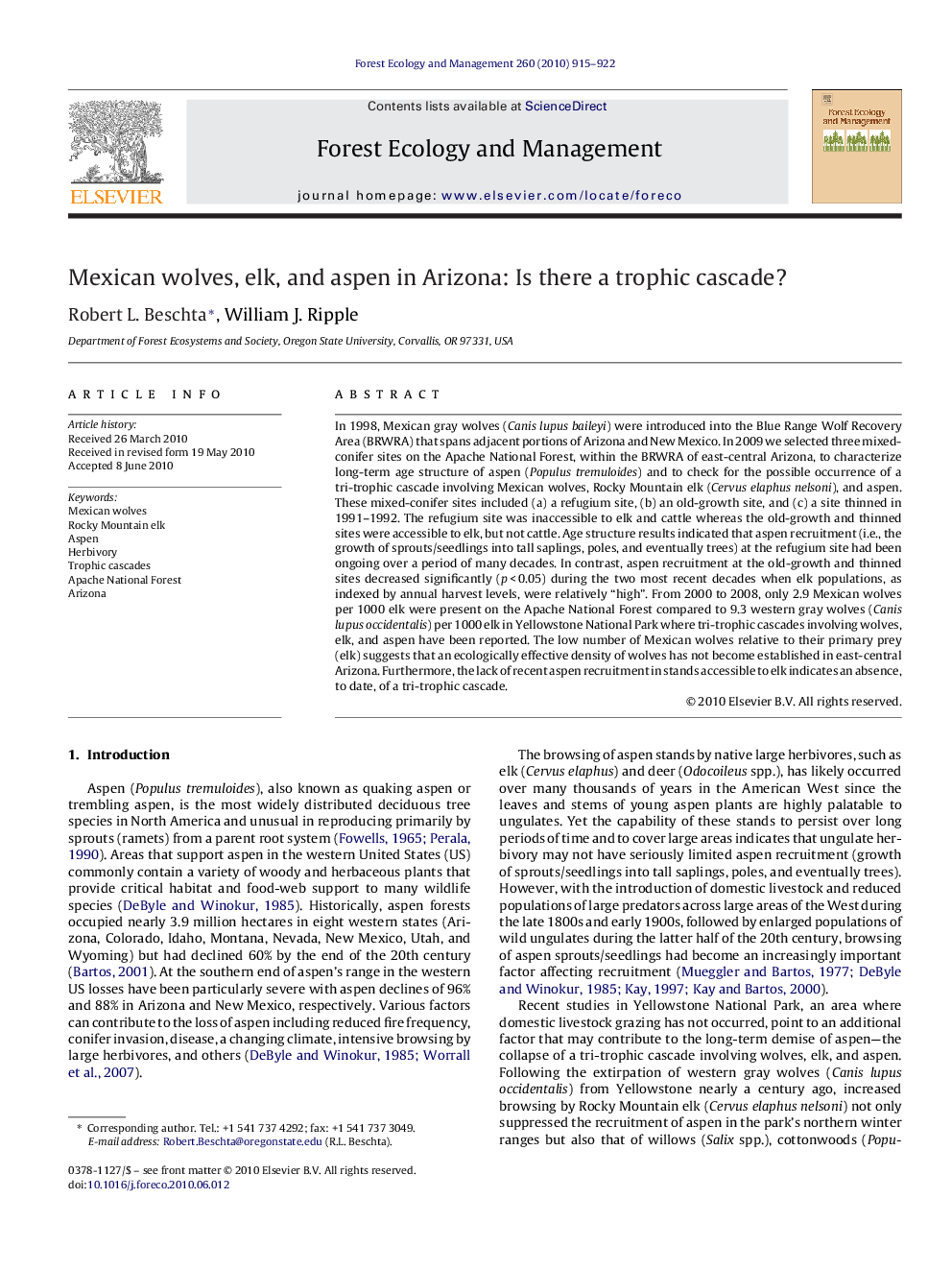| کد مقاله | کد نشریه | سال انتشار | مقاله انگلیسی | نسخه تمام متن |
|---|---|---|---|---|
| 88416 | 159301 | 2010 | 8 صفحه PDF | دانلود رایگان |

In 1998, Mexican gray wolves (Canis lupus baileyi) were introduced into the Blue Range Wolf Recovery Area (BRWRA) that spans adjacent portions of Arizona and New Mexico. In 2009 we selected three mixed-conifer sites on the Apache National Forest, within the BRWRA of east-central Arizona, to characterize long-term age structure of aspen (Populus tremuloides) and to check for the possible occurrence of a tri-trophic cascade involving Mexican wolves, Rocky Mountain elk (Cervus elaphus nelsoni), and aspen. These mixed-conifer sites included (a) a refugium site, (b) an old-growth site, and (c) a site thinned in 1991–1992. The refugium site was inaccessible to elk and cattle whereas the old-growth and thinned sites were accessible to elk, but not cattle. Age structure results indicated that aspen recruitment (i.e., the growth of sprouts/seedlings into tall saplings, poles, and eventually trees) at the refugium site had been ongoing over a period of many decades. In contrast, aspen recruitment at the old-growth and thinned sites decreased significantly (p < 0.05) during the two most recent decades when elk populations, as indexed by annual harvest levels, were relatively “high”. From 2000 to 2008, only 2.9 Mexican wolves per 1000 elk were present on the Apache National Forest compared to 9.3 western gray wolves (Canis lupus occidentalis) per 1000 elk in Yellowstone National Park where tri-trophic cascades involving wolves, elk, and aspen have been reported. The low number of Mexican wolves relative to their primary prey (elk) suggests that an ecologically effective density of wolves has not become established in east-central Arizona. Furthermore, the lack of recent aspen recruitment in stands accessible to elk indicates an absence, to date, of a tri-trophic cascade.
Research highlights▶ Elk populations have been high in Arizona since the early 1990s. ▶ High elk numbers have led to decreased aspen recruitment. ▶ Mexican wolves were introduced into Arizona in 1998. ▶ A tri-trophic cascade of wolves-elk-aspen has not occurred. ▶ Wolves have apparently not achieved an ecologically effective density.
Journal: Forest Ecology and Management - Volume 260, Issue 5, 30 July 2010, Pages 915–922